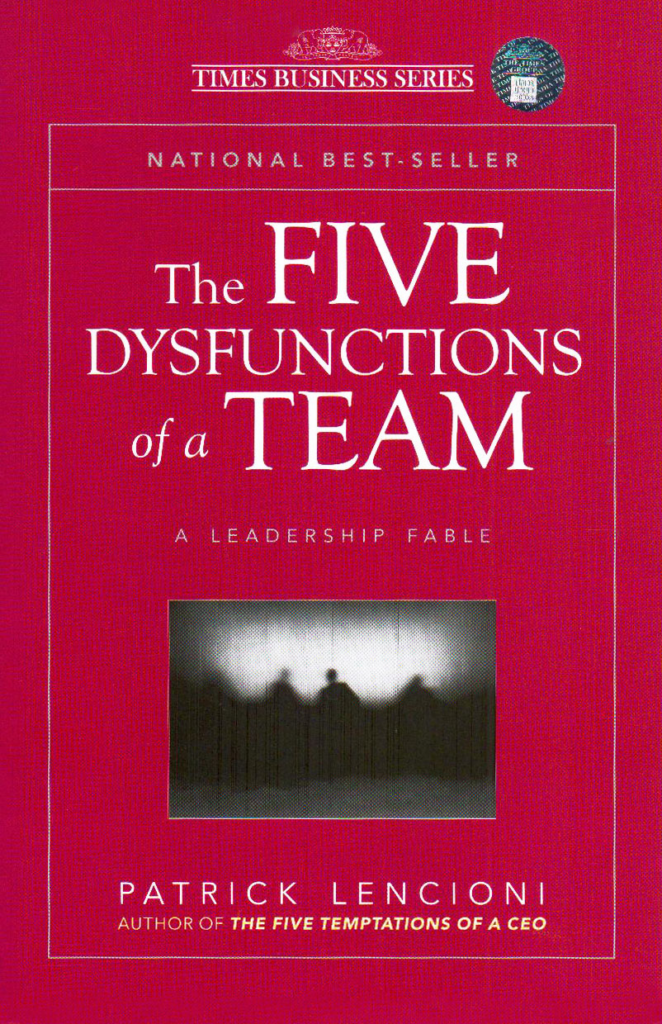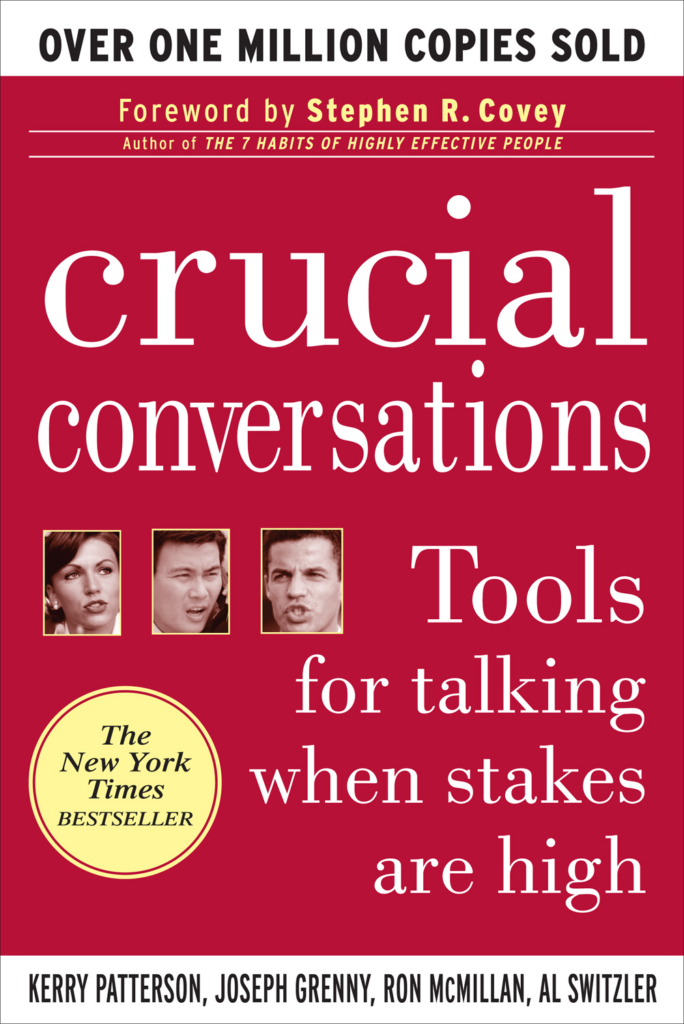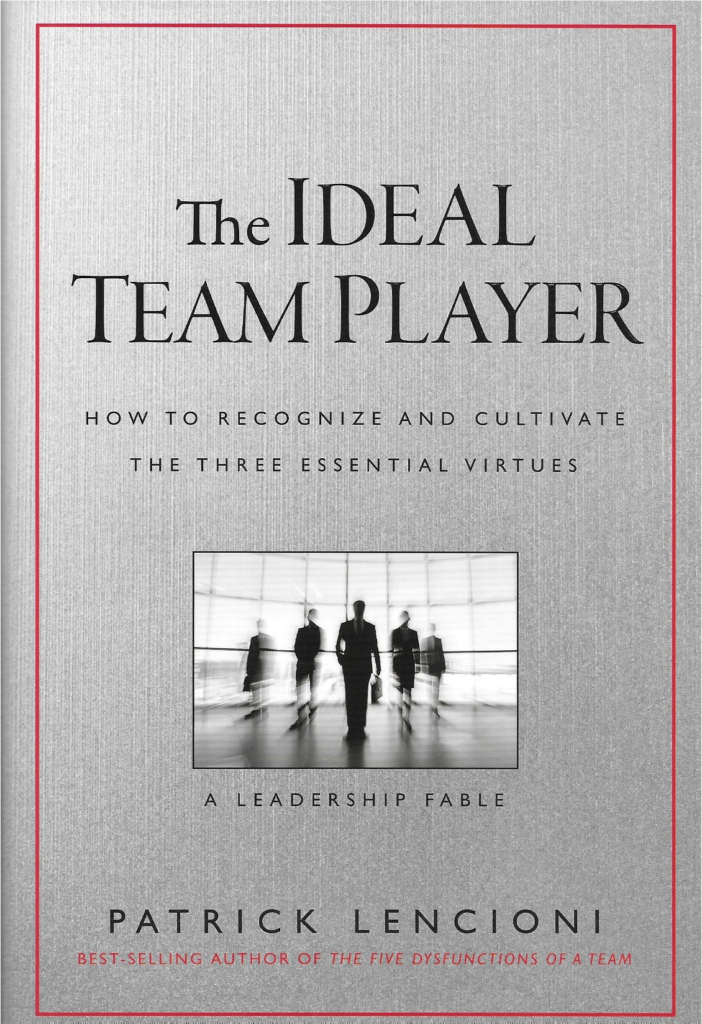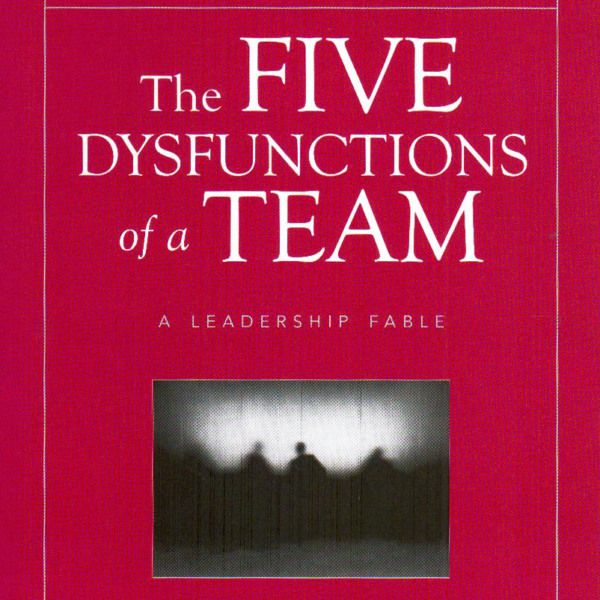Collaboration is at the heart of successful team endeavors, and arming yourself with the right knowledge can make all the difference. In this comprehensive guide, we’ll embark on a journey through the realm of teamwork, exploring the top 10 must-read books that offer invaluable insights into fostering better collaboration. Let’s dive into the pages of these books and discover how they can transform your approach to working together effectively.
1. The Five Dysfunctions of a Team by Patrick Lencioni
In this groundbreaking book, Patrick Lencioni uncovers the root causes of team dysfunction and provides a practical model for overcoming common challenges. Lencioni’s expertise is presented through engaging storytelling that breaks down complex concepts into relatable anecdotes. This book is a must-read for leaders and team members alike, as it sheds light on how trust, conflict, commitment, accountability, and results intertwine to build a strong foundation for successful teamwork.

List of Key Takeaways:
- The importance of trust-building as the foundation of teamwork;
- How healthy conflict can lead to better decisions and stronger relationships;
- Strategies to foster commitment and ensure alignment towards shared goals;
- The role of individual accountability in driving collective team performance;
- Achieving results through mutual accountability and a focus on the team’s objectives.
2. Crucial Conversations by Al Switzler, Joseph Grenny, and Ron McMillan
Effective collaboration hinges on open and constructive communication. “Crucial Conversations” equips readers with tools to navigate challenging discussions with grace and purpose. The authors emphasize the significance of maintaining productive dialogue even in high-stakes situations. By mastering the techniques presented in this book, teams can ensure that differing opinions don’t hinder collaboration but instead contribute to robust decision-making.

List of Practical Techniques:
- Identifying crucial conversations and their potential impact on teamwork;
- Creating a safe environment for open dialogue through mutual respect;
- Mastering the art of active listening to understand diverse perspectives;
- Navigating emotions effectively to prevent conversations from derailing;
- Reaching consensus and making decisions that prioritize the team’s success.
3. Drive by Daniel H. Pink
Team members’ motivation and engagement are integral to collaboration. Daniel H. Pink’s “Drive” introduces a fresh perspective on motivation, highlighting autonomy, mastery, and purpose as key factors. By understanding what drives individuals, teams can create an environment that nurtures collaboration and taps into each member’s unique strengths.

List of Motivation Insights:
- The role of autonomy in empowering team members to take ownership of their work;
- How the pursuit of mastery drives continuous improvement and innovation;
- Aligning individual and team goals with a sense of purpose and meaning;
- Strategies for fostering an environment that supports intrinsic motivation;
- Applying the principles of “Drive” to enhance team dynamics and productivity.
4. Team of Teams by General Stanley McChrystal
In today’s rapidly changing landscape, collaboration requires adaptability. Drawing insights from military operations, General Stanley McChrystal’s “Team of Teams” emphasizes the importance of decentralized decision-making and fluid communication. This book offers a blueprint for transforming traditional hierarchical structures into agile, collaborative systems.

List of Organizational Shifts:
- Embracing adaptability and agility in response to dynamic challenges;
- Shifting from siloed decision-making to a decentralized and interconnected approach;
- Leveraging technology to facilitate real-time communication and information sharing;
- Nurturing a culture of transparency, trust, and open information exchange;
- Strategies for building a “team of teams” that thrives in complex environments.
| Traditional Hierarchy | Team of Teams Approach |
|---|---|
| Centralized decisions | Decentralized decisions |
| Linear communication | Networked communication |
| Slow adaptability | Agile responsiveness |
| Siloed information | Transparent sharing |
5. Lean In by Sheryl Sandberg
While not solely focused on teamwork, Sheryl Sandberg’s “Lean In” offers insights that contribute to understanding diverse perspectives in collaborative settings. The book discusses women’s empowerment and leadership, shedding light on how inclusivity and diverse voices are crucial components of successful teamwork.

List of Inclusive Practices:
- Recognizing and challenging biases that may hinder collaboration;
- Creating an environment that values and amplifies diverse perspectives;
- Promoting equal participation and contributions from all team members;
- Strategies for fostering a culture of inclusivity and gender equality;
- Applying lessons from “Lean In” to create a more robust and effective team dynamic.
6. Collaborative Intelligence by Dawna Markova and Angie McArthur
Understanding the nuances of collaboration is at the heart of effective teamwork. “Collaborative Intelligence” introduces the concept of “CQ” (Collaborative Intelligence) and provides practical exercises to enhance understanding, empathy, and synergy among team members.

List of Collaborative Skills:
- Developing self-awareness and understanding personal communication preferences;
- Recognizing and adapting to diverse communication styles within the team;
- Building empathy and active listening to foster deeper connections;
- Leveraging collective strengths to solve complex problems collaboratively;
- Integrating the principles of “CQ” to enhance overall team performance.
| Individual Strengths | Team Collaborative Efforts |
|---|---|
| Problem-solving skills | Collective brainstorming |
| Communication style | Synergy in idea sharing |
| Decision-making | Consensus building |
| Emotional intelligence | Mutual support |
7. Getting to Yes by Roger Fisher and William Ury
Negotiation is a fundamental aspect of collaboration. “Getting to Yes” introduces the concept of principled negotiation, where the focus is on finding mutually beneficial solutions that contribute to team cohesion.

List of Negotiation Techniques:
- Separating people from the problem to foster constructive discussions;
- Identifying and focusing on shared interests for win-win outcomes;
- Developing objective criteria to guide decision-making;
- Building relationships and trust through transparent negotiations;
- Applying principled negotiation principles to build a culture of collaboration.
8. The Ideal Team Player by Patrick Lencioni
Patrick Lencioni’s “The Ideal Team Player” outlines three essential virtues that contribute to effective collaboration: humility, hunger, and people-smart skills. These qualities create a balanced and cohesive team environment.

List of Virtues for Collaboration:
- Humility: Placing team success above personal recognition;
- Hunger: Demonstrating a strong drive to contribute and achieve goals;
- People-Smart: Navigating interpersonal relationships and teamwork dynamics;
- Strategies for assessing and cultivating these virtues within the team;
- Creating a collaborative culture that embodies these qualities.
9. Collaboration Begins with You by Ken Blanchard, Jane Ripley, and Eunice Parisi-Carew
True collaboration starts at an individual level. “Collaboration Begins with You” emphasizes the responsibility each team member has in fostering a culture of teamwork within organizations.

List of Individual Actions:
- Taking ownership of one’s role in contributing to the team’s success;
- Seeking opportunities to support and assist colleagues;
- Prioritizing open communication and active listening;
- Strategies for influencing positive change from within the team;
- Nurturing a collaborative mindset that ripples throughout the organization.
10. Group Genius by Keith Sawyer
Innovation often emerges from collaborative efforts. Keith Sawyer’s “Group Genius” explores the dynamics of group creativity, shedding light on how diverse perspectives, brainstorming, and collaboration lead to groundbreaking results.

List of Creativity Boosters:
- Fostering an environment that encourages risk-taking and idea generation;
- Leveraging diverse skill sets for multidisciplinary collaboration;
- Brainstorming techniques that promote idea flow and expansion;
- Strategies for refining and implementing innovative concepts collaboratively;
- Applying the principles of “Group Genius” to drive creative problem-solving.
Conclusion
As we conclude our journey through these 10 must-read teamwork books, it’s evident that collaboration is a multifaceted endeavor that requires both individual commitment and collective effort. From understanding the dynamics of dysfunction to harnessing the power of diverse perspectives, these books provide a treasure trove of insights and strategies. By embracing the lessons they offer, you can elevate your collaboration skills and play an instrumental role in fostering an environment of shared success within your team.
FAQs
Remote teams can apply the principles of effective communication, motivation, and inclusivity from these books to overcome distance and collaborate seamlessly.
No, these books are designed for team leaders, members, and anyone seeking to enhance their collaboration skills and contribute to their team’s success.
Absolutely, the insights and strategies discussed in these books are adaptable to various team structures, including cross-functional teams.
Yes, each book provides actionable strategies, exercises, and real-world examples that you can immediately incorporate into your teamwork approach.
Consider organizing book clubs, discussion sessions, or workshops to foster a collaborative learning environment that benefits the entire team.
